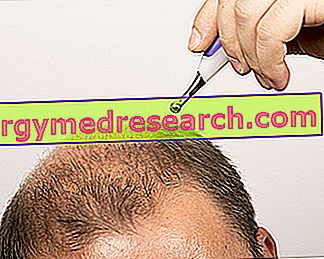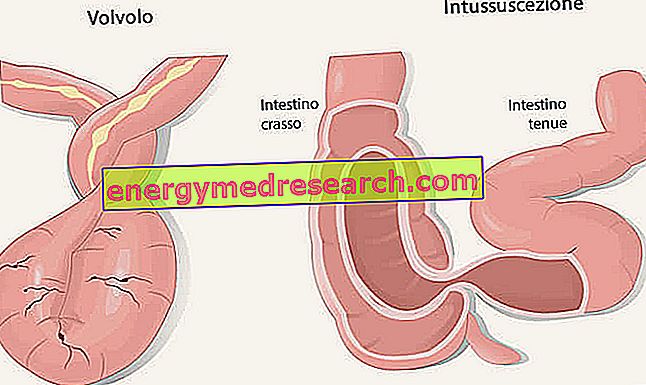Definition
The term "milk crust" is commonly used to express a form of typically infantile seborrheic dermatitis, responsible for the formation of a scaly crust on the baby's scalp. This is certainly not a serious or dangerous condition, but the milk crust can also affect the skin of the child's face; however, this dermatitis tends to resolve itself in a few months.
Causes
The clinical evidence shows that the overproduction of sebum in the scalp can favor the milk crust; however, the cause that triggers this has not yet been identified with certainty. Possible and conceivable are maternal (androgenic) hormones that, even after birth, remain in the blood of the child, altering its hormonal balance.
- Risk factors: food allergies / intolerances, fungal infections, scabies
Symptoms
The milky crust manifests itself with typical thick crusts at the scalp level, associated with erythema, dandruff, oily, sometimes itchy skin. The flakes of skin can also affect the nose, eyelids, ears and groin.
Information on the Milky Crust - Drugs for the treatment of the Milky Crust is not intended to replace the direct relationship between health professional and patient. Always consult your doctor and / or specialist before taking Milky Crust - Milky Crust Drugs.
drugs
The milky crust tends to autorisolvert itself after a few months from the appearance (and from the birth), therefore only rarely this condition requires pharmacological treatments and specific medical cures.
It is recommended to wash the hair of the child with milky crust with delicate and non-aggressive shampoos, avoiding to brush the hair too often. If the problem persists, consult your doctor, who generally recommends tar, ketoconazole or selenium based products, useful substances to speed up healing.
In some patients, cortisone-based creams are recommended to reduce inflammation and redness.
- Selenium disulfide (eg Selsun Blue Anti-dandruff): the product is available both as a shampoo (1-2.25%), and as a foam, for topical application. Shampoo should generally be used twice a week; then wash the hair with selenium-based shampoo every 2-4 weeks. It is not necessary to use this formulation too often to keep under control the typical symptoms of milk crust. Alternatively, the foam should be applied to the scalp or to the area affected by the milk crust twice a day. Treatment may cause mild local irritation.
- Ketoconazole (eg. Triatop, Nizoral, Asquam): preferable to disulfide selenium, since it causes less irritation to the scalp. The shampoos formulated with ketoconazole represent the cure of choice to solve the problem of the milk crust. The products based on this active ingredient can be found in the form of gel, foam and cream. Cream and foam (both 2%) should be applied to the scalp twice a day for 4 weeks, or until the symptoms are remedied. The 2% gel should be applied to the area affected by the milk crust once a day for 2 weeks.
- Clotrimazole (eg Ducray Triazol): indicated for treating cradle cap due to a fungal infection. Available in the form of 2% shampoo, the product is indicated for the treatment of seborrheic dermatitis in adults and for the treatment of cradle cap in infants, to reduce redness and swelling.
- Miconazole nitrate (ex. Miconal, Daktarin): apply the product on damaged skin for 7-14 days. This is a second choice drug for the treatment of cradle cap; it is in fact prescribed, generally, for the treatment of vaginal infections.
- Zinc pyrithione (eg. Lunaderm Hygienic Mousse): this substance (antiseborroica) is particularly recommended for the treatment of seborrheic dermatitis proper (in the adult), but less in the infant, since the contact of the product with the eyes creates irritation and burning . Consult your doctor.
- Hydrocortisone (eg Locoidon, Colifoam): hydrocortisone-based pharmacological products are indicated to reduce swelling, possibly associated with itching, in the child suffering from the milky crust. It is recommended to use the product only under the advice and medical prescription: indicatively, apply the hydrocortisone cream or gel once a day or every other day. Generally, drug therapy should last for several weeks. Do not use the product beyond the recommended doses.
NB The milky crust can be confused for ringworm: in this case, the children who are affected are treated with antifungal drugs. If the problem is solved in a short time with the topical application of antifungals, in all probability the little patient is affected by ringworm; otherwise, it is a milk crust.
Natural remedies for the treatment of cradle cap
It is possible to treat the disorder with the application of vegetable oils before normal washing with delicate shampoos: the oils - such as borage, calendula, chamomile, olive and rice - soften the flakes created by the milk crust, speeding up the healing. Topical application of vaseline oil in areas affected by milk crust is another popular remedy.



